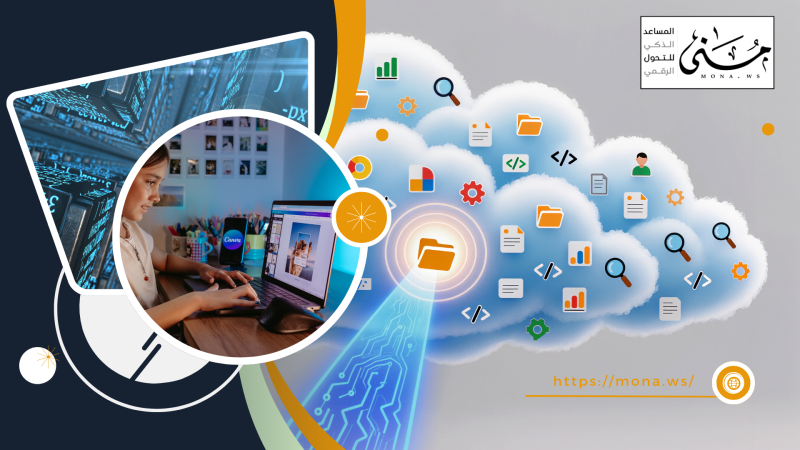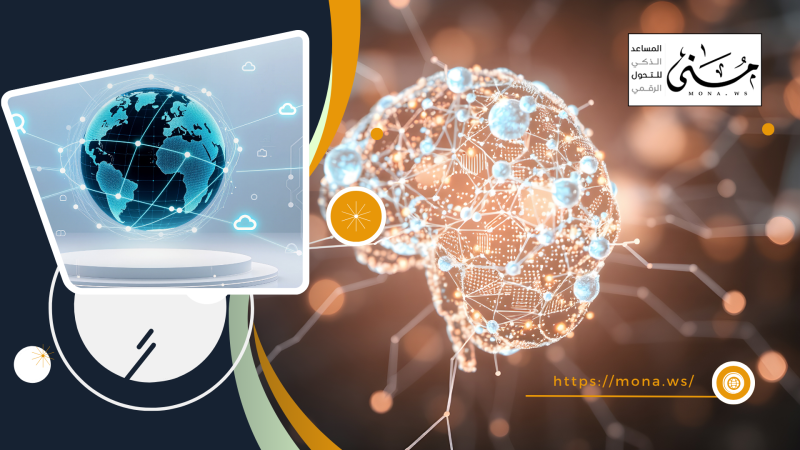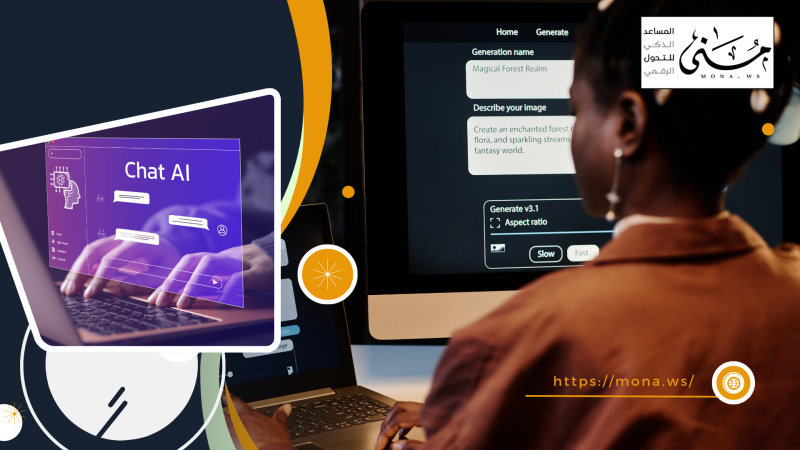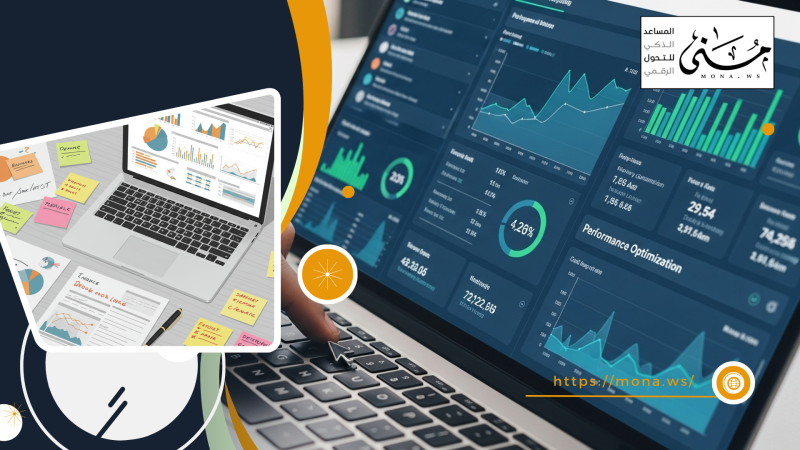Today, the role of human resources management is no longer limited to recording attendance, preparing payroll, or implementing routine administrative procedures. The landscape has completely changed, and human capital management (HCM) has become A pivotal element in shaping the future of institutions, making their strategic decisions, and driving them towards innovation and growth .
In an era of rapid change and a constantly evolving labor market, organizations face an existential challenge : How do they manage their human resources intelligently, quickly, and with insight? This is where a complete digital transformation in human resources management comes in—not as a cosmetic option, but as a necessity for survival and excellence .
Today, we are witnessing a new wave of HR systems that no longer rely solely on automation, but rather extend it to forward-looking systems that rely on artificial intelligence and predictive analytics , leveraging big data to understand human behavior, predict future organizational needs, and provide an integrated and personalized employee experience .
Modern systems like DocSuite HCM are no longer They have transformed from background tools for specialists into leadership platforms that enable managers to make informed decisions, provide employees with a sense of participation and fairness, and enhance belonging through transparency, speed, and ease of access .
This article explores the features of this radical shift in human capital management, and analyzes how organizations are moving from paper-based management and bureaucratic procedures to smart, flexible, and proactive management that redefines the relationship between employee and workplace .
First: From traditional management to digital transformation in human resources
Pre-transformation: Effort-consuming management that limits impact
In the traditional model, human resources management has long been viewed as a purely administrative function, focused on managing employee affairs through paper files, Excel spreadsheets , and repetitive, manual procedures. These models focused on compliance with laws and regulations, but lacked analytical tools, strategic monitoring, and real-world influence on decision-making .
Workforce planning was often reactive rather than proactive, talent acquisition was driven by market conditions rather than data-driven insights, and performance evaluations were driven by managers' impressions rather than actual KPIs. Employee experience was a low priority, often viewed from a procedural rather than developmental perspective .
Digital Transformation: Redefining Human Capital Management
With the growing need for speed, accuracy, and customization , traditional management tools are no longer able to keep up with new challenges. This is where the digital transformation in HR has begun to take the lead, fundamentally reshaping HR functions .
Digital HCM systems have become the linchpin of modern HR functions. They are not just about managing data, but also about transforming that data into actionable insights. HR is no longer a department that reacts to problems after they occur; it now has the ability to anticipate events, plan workforces, and improve the employee experience in real time .
From ERP to Smart HCM : A Quantum Leap
Although enterprise resource planning (ERP) systems included human resources modules, they primarily focused on financial management and operations, making human resources management a secondary function. Modern HCM systems, such as DocSuite HCM , are specifically designed to be a comprehensive digital hub for managing the entire employee lifecycle, from the first interview through retirement or exit .
These systems provide :
- Comfortable and easy to interact with user interfaces
- Instant reports and interactive dashboards
- Smart tools for performance evaluation and talent scouting
- Seamless integration with learning systems, time management, and succession planning
Smart analytics and big data in the service of human decisions
From intuition to data-driven insight
In the past, HR decisions were often based on personal impressions, human experience, or scattered records that were difficult to analyze. Today, with the growing use of big data With smart analytics , human capital management has become almost an exact science, built on numbers, trends, and hidden patterns .
Data is no longer just stored for archival purposes; it has become a tool that enables managers to predict, compare, evaluate, and make decisions with confidence . The shift from "What happened?" to "Why did it happen?" and "What will happen next?" is the essence of the new paradigm of human resource management .
Predictive Analytics: Reading the Human Future
One of the most prominent elements of transformation in modern HCM systems is their reliance on predictive analytics , which relies on artificial intelligence algorithms to determine :
- Turnover Prediction
- Possibility of decreased performance or burnout detection
- Anticipate training needs based on skill patterns
- Predicting competency gaps before they appear
This type of analysis helps departments move quickly and provide proactive solutions that enhance human resource stability and motivate performance .
The Role of Big Data in Improving HCM Operations
🟢 Smart recruitment
By analyzing resumes, interview results, and personality tests, intelligent systems can select the best candidates whose skills match the job requirements and the organization's culture .
🟢 Accurate performance evaluation
Instead of traditional annual evaluations, smart data provides real-time performance reports based on actual KPIs and employee behavior within digital systems .
🟢 Succession Planning
By tracking career paths and acquired skills, the most suitable people can be identified for leadership positions, and customized development programs can be planned for them .
🟢 Design training and development plans
Digital systems analyze current skills and skill gaps, and suggest personalized learning paths for each employee based on their performance and needs .
From Reaction to Anticipation: A Paradigm Shift in Human Function
The power of intelligent analytics lies in its ability to move human resources from a position of response to a position of leadership . Decisions are no longer made after an event occurs, but rather before it occurs , making human resources a true strategic partner in building a resilient and motivated work environment .
HCM : Not Just a System… It's a Leadership Platform
Modern human capital management systems are no longer just databases for storing employee information. They have become dynamic platforms that enable HR teams and managers to accurately and effectively lead and improve the employee experience . Among the most prominent of these integrated systems is DocSuite HCM. As an advanced model that embodies the comprehensive digital transformation in human resources management .
Unified digital file for the employee
maybe DocSuite HCM enables organizations to create a comprehensive digital file for each employee, containing their personal, professional, contractual, training, and performance information. This file serves as a central reference for all stages of the employee lifecycle, reducing reliance on scattered papers and documents. This unification makes it easier to track career progression, process requests, and analyze performance with greater efficiency .
Smart Performance Management
Performance management is distinguished in DocSuite HCM focuses on continuous, objective employee evaluation through tools based on measurable performance indicators (KPIs) and feedback from colleagues and managers. Performance results are displayed interactively, helping inform decisions regarding promotions or improvement plans, with the ability to customize forms to suit each job or department .
Integrated Learning and Development Management
The system provides an integrated training environment that enables the organization to plan training programs and link them to corporate objectives and targeted competencies. Training courses can be scheduled internally or online, and employee participation and evaluation after training can be tracked. This helps build a culture of continuous learning and improve professional readiness to meet market and job transformations .
Analytical reports and interactive dashboards
Owns DocSuite HCM offers advanced analytics capabilities that enable management to present data in visual dashboards covering vital metrics such as turnover, completion rates, skill distribution, and absenteeism rates. These dashboards help make immediate, data-driven decisions, enhancing the efficiency of strategic HR planning .
Seamless integration with other enterprise systems
Allows DocSuite HCM offers flexible integration with financial, administrative, time management, and project management systems, ensuring consistent data flow across all departments of the organization. Whether you use ERP , CRM , or accounting systems, you can connect DocSuite It seamlessly integrates through APIs , saving time and reducing duplication of data entry .
Self-service and digital employee experience
Through the self-service portal, employees can easily perform many administrative tasks, such as submitting a leave request, updating their information, uploading their documents, tracking their evaluations, or inquiring about their employment status. This enhances employee autonomy, provides a smoother and more professional experience, and reduces the burden on the human resources department in handling repetitive daily transactions .
The impact of digital transformation on employee experience and organizational loyalty
In traditional systems, employees have long suffered from marginalization, as administrative processes were time-consuming, ambiguous, and bureaucratic. With the full digital transformation , however, the equation has changed. The employee experience has become at the core of modern HCM systems , and employees are now viewed as a strategic partner in the organization's success, not just an operational element .
Digital Work Environment: A Demand, Not a Luxury
The modern employee, especially the digital natives, expects a seamless, flexible, and interactive work environment. Systems like DocSuite HCM It provides customers with access to their data, transactions, and performance monitoring from anywhere, anytime. This not only provides convenience and flexibility, but also enhances productivity and reduces the frustration associated with manual procedures .
Self-Service Tools: Empowerment and Transparency
Self-service is no longer just an add-on; it's a true empowerment tool. When employees can submit a leave request, track their evaluation status, or view their payslip without having to wait or engage in human intervention, they feel more confident in the organization's system. This transparency contributes to establishing an environment of fairness and equality, and reduces administrative disputes and negative perceptions .
Personalization and improvement of the work experience
Thanks to intelligent analytics, digital systems can deliver a personalized experience for each employee . From training recommendations to career development plans to performance-based recognition, employees feel like the system "knows" them and interacts with them in a human, personalized way. This is one of the keys to building deep loyalty, which is difficult to achieve in traditional environments .
An institutional climate that encourages participation and belonging
Digital transformation in human resources management creates a climate that supports interaction, dialogue, and participation . When employees feel their voice is heard, their evaluations are fair, and their efforts are appreciated, job satisfaction levels rise and organizational loyalty increases . This is directly reflected in performance quality, talent retention, and reduced employee turnover rates .
Technology as a humanitarian tool
Although digital transformation appears to be technical in essence, its true impact lies in strengthening the human element within an organization . Smart systems do not eliminate personal relationships, but rather support them with reliable information, remove ambiguity, and improve the quality of dialogue between employees and their managers, and between the team and senior management .
Challenges to a Full Digital Transformation in HCM
Despite the significant benefits of digital transformation for human capital management, its full implementation is not without challenges. Understanding these challenges is the first step toward overcoming them and ensuring the success of your digital HR initiative .
Resistance to change from management and employees
Digital transformation is often met with reservations from some employees or departments accustomed to traditional methods. Some fear losing control or see technology as a threat to their role. This is where awareness, training, and building a culture of change that emphasizes the benefits of transformation for everyone, not just senior management , comes into play .
High initial investment costs
A complete digital transformation requires an initial investment in systems, training, and technical integration. Some organizations may see this cost as a barrier, especially if immediate results are not clear. However, viewing digital transformation as a "long-term investment" in efficiency and agility helps reevaluate this aspect and justify it financially .
Complexity of integration with legacy systems
Many organizations rely on legacy and inflexible systems, making their integration with modern HCM systems a technical challenge. This requires careful planning, and possibly a restructuring of the digital architecture, to ensure data flows smoothly without duplication or loss .
Data Protection and Regulatory Compliance
Managing employee data requires the utmost security, especially as it moves to cloud environments or internet-connected applications. Organizations must ensure compliance with data protection laws ( such as GDPR or local labor laws ) through clear policies, encryption, and strict permission and access management .
Lack of digital skills within the HR department
Some HR staff may not have sufficient experience with advanced HCM tools or understanding intelligent analytics techniques. Therefore, comprehensive training or the use of specialized consultants is essential to prepare the team and facilitate its adoption of the new digital ecosystem .
Cultural transformation before technical transformation
Digital transformation is not simply a technical project; it's a comprehensive cultural shift in the way an organization thinks. Successful digital HCM requires a new mindset that embraces transparency, flexibility, and real-time interaction. Ignoring this cultural aspect renders any advanced digital system a mere facade with no real impact .
Experience has shown that organizations that have embraced digital transformation in human resources management – through intelligent HCM systems such as DocSuite HCM – have not only achieved improved efficiency, but have also taken their relationship with their employees to a new level of transparency, trust, and empowerment .
Smart analytics, big data, self-service, and the digital employee experience are no longer technological luxuries; they have become strategic pillars for building a flexible, engaging, and creative work environment. With the labor market witnessing fierce competition for talent, the employee experience has become a decisive factor in an organization's survival and continuity .
While we recognize the benefits, we must acknowledge the challenges—whether technical, human, or cultural. However, successfully overcoming these challenges begins with a clear leadership vision that believes that digital transformation in human resources is not merely a matter of updating a system, but rather a redefinition of the role of the individual within the organization .
Ultimately, the future of HR will not be built on paper or intuition, but rather on accurate data, intelligent analytics, and human experiences powered by technology . Now is the perfect time for organizations to confidently step into this future .






Comments
Add New Comment